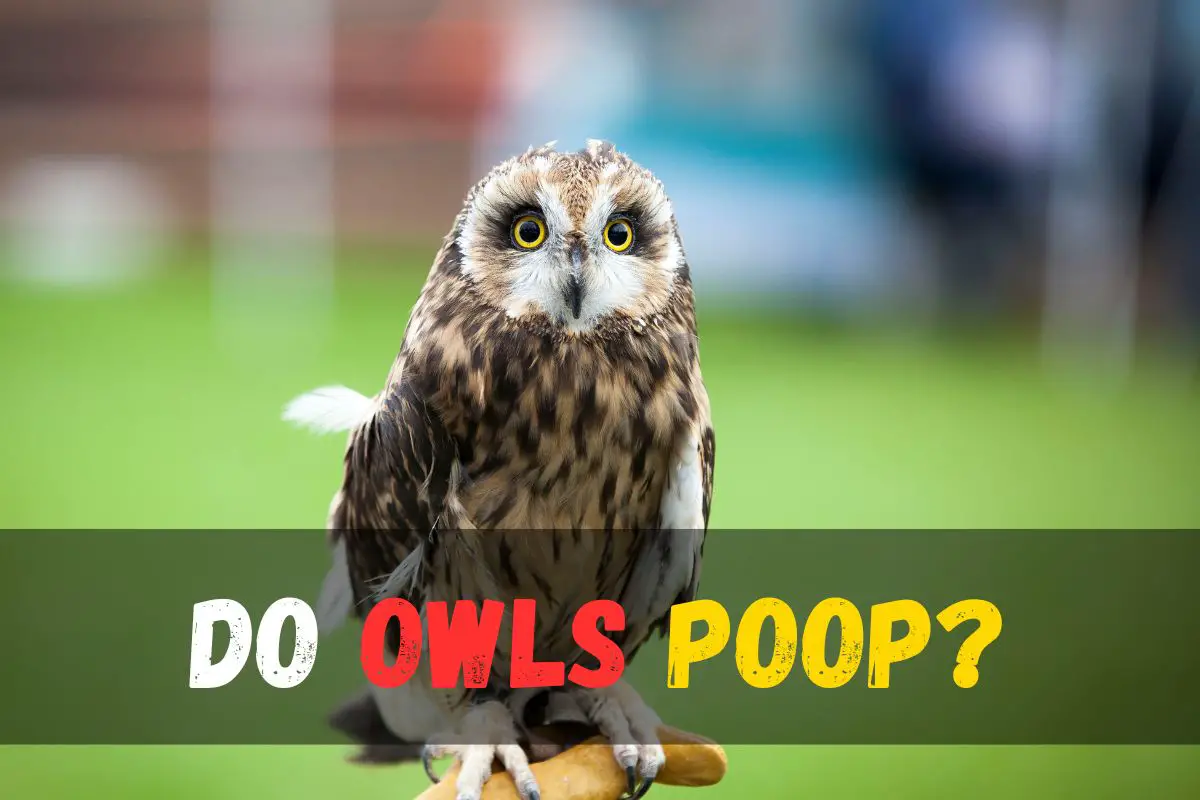Do owls poop?
Owls, as fascinating creatures found in various regions, including North Carolina, have a unique digestive process. When a Barred owl consumes its prey, it ingests a variety of materials, including bones, fur, teeth, feathers, and soft tissues. Once inside their stomachs, the digestive journey begins, and these materials are processed remarkably. But what truly captivates the curious mind is the question that often arises: Do owls poop? Delving into the secrets of owl biology and their unique waste disposal system, we unravel a remarkable tale of digestive ingenuity, feces, uric acid, and regurgitated pellets – all while exploring the main topic of how owls handle their waste.
Owls, just like other birds, get rid of waste through their cloaca, an opening near the base of their tail feathers. They expel both feces and uric acid in one go, which helps them save water in their bodies.
The food travels through the owl’s intestines, where the nutrients are extracted. During this process, the owl’s body efficiently absorbs water and digests the prey. However, what sets owls apart is their method of dealing with indigestible substances and waste. Owls do not excrete feces in the traditional sense; instead, they have a specialized organ called the cloaca.
Within the cloaca, the indigestible and non-nutritive components, such as bones and fur, are compacted into a mass known as a pellet. Owls eventually regurgitate this pellet, effectively removing these waste materials from their digestive system. This regurgitated pellet contains the remains of what the owl has consumed, and it offers valuable insights into their diet and hunting habits.
In this process, uric acid plays a crucial role in eliminating waste, and it is excreted separately from the pellet through the opening in the cloaca. The uric acid is a way for owls to expel metabolic waste from their bodies.
What does Owl Poop Look Like?
Owl poop, often referred to as excrement or feces, appears as a white, watery, and slimy substance, resembling spilled splotches of white paint. This white color is primarily due to the presence of uric acid in the owl’s waste. It bears a resemblance to pigeon poop, which is a similar-looking substance. However, the feces of a barn owl can vary, sometimes appearing both white and black or solely black.
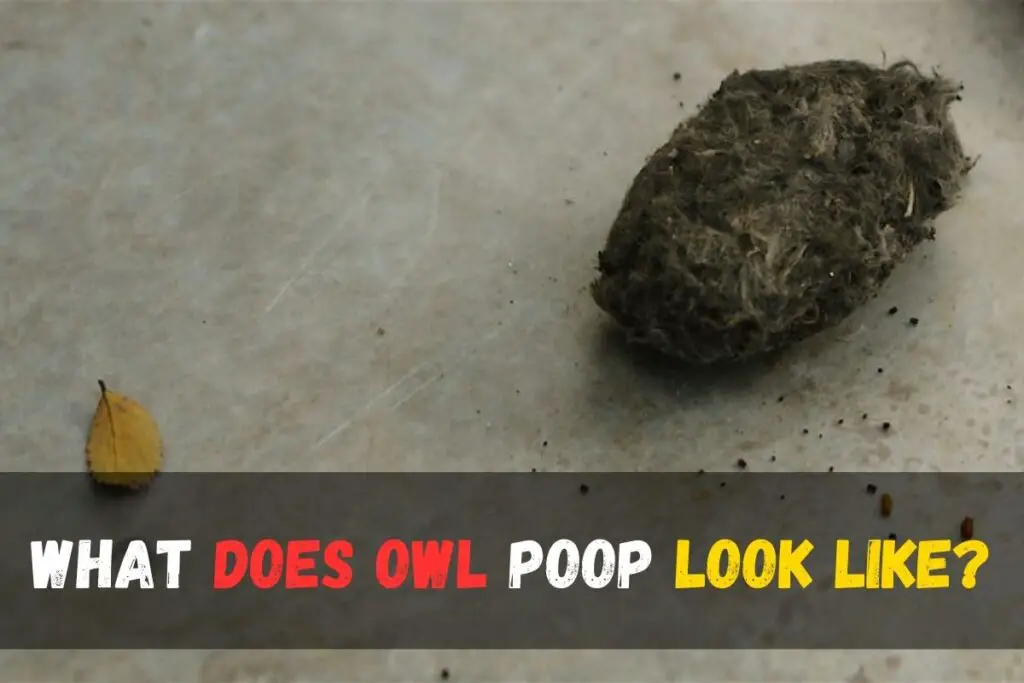
If you suspect the presence of owls roosting in your shed, you can look for signs of white owl poop drying on the wood surfaces around it and on the surfaces below. This can help you identify their presence and the characteristic appearance of owl poop.
Does Owl Poop Smell?
Yes, owl excrement, also known as owl poop, can indeed have a putrid odor. This odor is a result of the digestion of meat in the owl’s system, similar to the smell of human feces after consuming meat. When the poop passes through the owl’s system, it carries the smell of digested meat from a dead animal, giving it an unpleasant odor.
However, it’s important to note that not all waste produced by owls smells the same way. The pellets that owls regurgitate from their mouths, which consist of undigested hard materials, do not have a discernible bad odor like their feces. These pellets may have a pungent smell but are not considered poop. Instead, they resemble vomit and lack the strong odor associated with digested meat.
What are Owl Pellets?
Owl pellets are compact masses of undigested materials from an owl’s stomach, typically containing bones, fur, feathers, beaks, and teeth. Owls, unable to digest these components, regurgitate them after the undigested matter is sorted and formed into a ball of crud in their gizzard, essentially expelling these indigestible remains.
How Often Do Owls Poop?
Owls do not defecate (poop) as frequently as many other birds or animals. Instead, they produce pellets, as mentioned earlier, which are regurgitated indigestible materials from their stomachs. The frequency of regurgitating pellets can vary depending on the owl’s diet and individual factors, but it typically occurs every 6-10 hours. So, they don’t have a typical “poop” schedule like some other animals.
What do Owls Eat?
Owls are carnivorous creatures, which means they primarily eat other animals. Their diet is quite diverse and includes a variety of small creatures. Some of the animals they eat include voles, mice, frogs, lizards, snakes, birds, rabbits, squirrels, and even bats and cats on occasion. If an owl lives near water, it may also include fish in its diet. Additionally, owls have been known to scavenge carrion from dead animals.
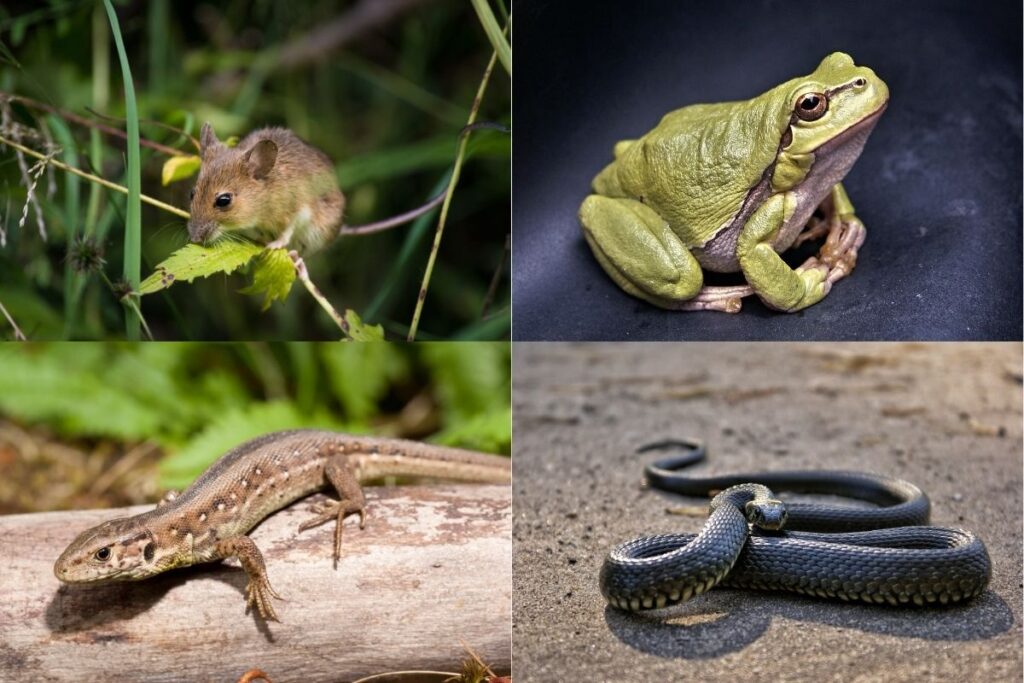
What makes owls interesting is that they are opportunistic hunters, meaning they adapt their diet based on what’s readily available in their environment, especially when they hunt at night. They tend to target prey that is relatively easy to capture. So, in summary, what owls eat depends on the local abundance of various creatures and their hunting opportunities, but they are known to consume a wide range of small animals as their primary food source.
Can Owls Poop Mid-air, While Flying?
Owls, with their incredible ability to poop while flying due to their fast metabolism and digestion process, generally prefer to alleviate their weight just before taking flight. While they can excrete mid-air, they tend to manage their bodily functions strategically, choosing to do so right before the flight to make themselves lighter for a smoother and more efficient aerial experience. This behavior aligns with their adaptability to process food swiftly and defecate whenever and wherever necessary, ensuring their comfort during flight.
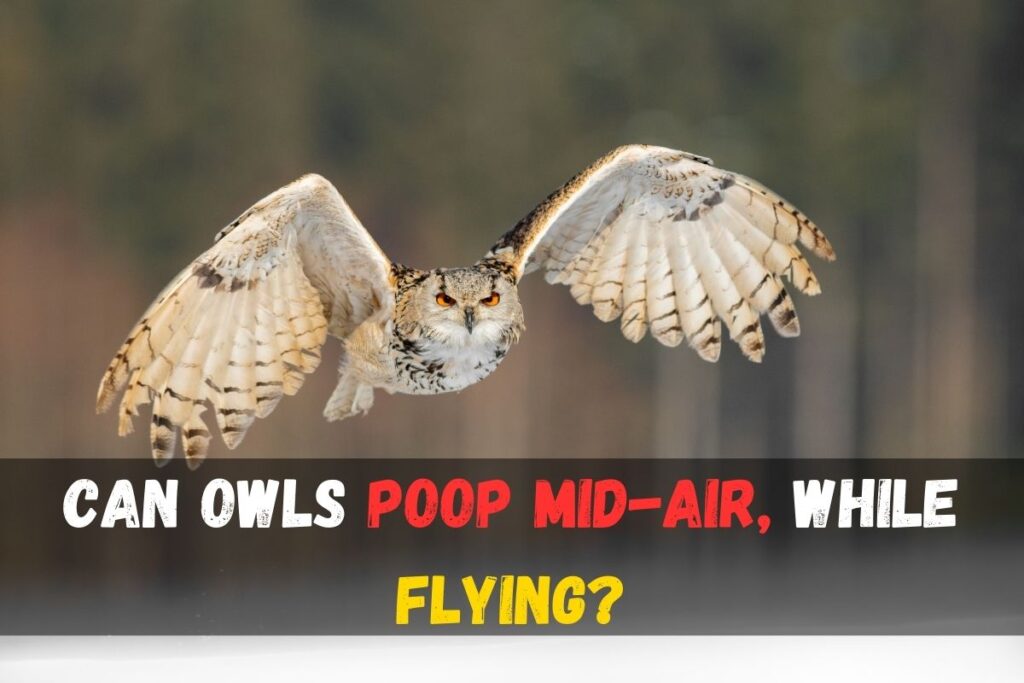
Do Baby Owls Make Pellets?
Baby owls, like their adult counterparts, have a unique digestive system that plays a crucial role in their survival. When it comes to feeding, both the male and female parent owls play an active role in hunting and providing sustenance for their young. Baby owls rely on their parents not only for food but also for guidance on how to develop their hunting skills.
As baby owls consume their prey in small chunks, they swallow the entire body of their catch, including bones, fur, and feathers. This might seem unusual, but it’s a crucial part of their digestive process. The undigested parts of their prey are stored within their digestive system until they are ready to be eliminated.
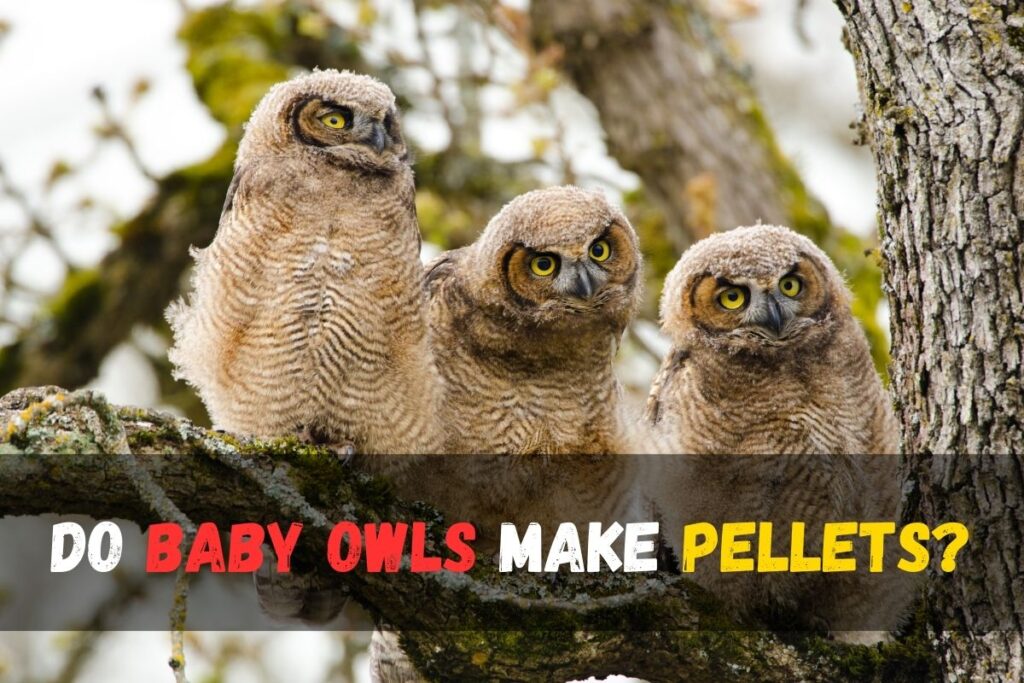
The most fascinating aspect of baby owls’ digestion is the production of pellets. These pellets are not just any waste product; they are fully developed and mature. Over time, as the undigested parts accumulate within the owl’s digestive system, the owl eventually regurgitates these contents in the form of pellets. These pellets are comprised of the indigestible portions of their prey, such as bones, fur, and feathers.
This regurgitation of pellets serves a vital purpose for baby owls. By expelling these pellets, they effectively cleanse their digestive system of the indigestible material, making room for new meals and ensuring that their digestive tract remains healthy and efficient. This unique process is one of the many remarkable adaptations that allow baby owls to thrive in their nesting sites and become skilled hunters as they grow.
How Can You Identify Bird Poop?
Identifying the specific bird species responsible for a particular bird poop can be challenging, but there are some clues and methods that may help you make an educated guess:
- Location: The location where you find the bird droppings can provide hints about the species. Different birds have different habits and perching locations. For example, if you find droppings under a tree with a particular type of nest, you might have an idea of the bird species involved.
- Size and Shape: The size and shape of the droppings can give you some clues. Larger droppings may come from larger birds, while smaller ones may come from smaller birds. The shape, such as round, oval, or cylindrical, can also be indicative of the bird’s species.
- Color: The color of the feces part of the droppings can vary based on the bird’s diet. For example, if the droppings are green, it may suggest a bird that primarily feeds on vegetation. Darker droppings might indicate a bird with a diet of insects or fish.
- Group Behavior: If you observe multiple instances of droppings in a concentrated area, it could indicate a communal roosting or nesting site of a specific bird species. In such cases, the bird species might be easier to identify.
- Field Guides: Field guides and bird identification books can be helpful resources. These guides often include descriptions of birds’ habits, nesting locations, and the appearance of their droppings. They may provide insights into which bird species are likely to leave such droppings.
- Local Bird Experts: Consulting with local birdwatchers, ornithologists, or wildlife experts can be one of the most reliable ways to identify bird droppings. They may have in-depth knowledge of the bird species in your area and can provide accurate identification based on the droppings’ characteristics and location.
- DNA Analysis: In some cases, if you require precise identification, you can send a sample of the droppings to a laboratory for DNA analysis. DNA testing can provide a conclusive answer regarding the bird species responsible for the droppings.
Do Owls Poop Out of Their Mouth?
No, owls do not poop out of their mouths. Owls, like all birds, have a digestive system similar to other animals. Their waste, in the form of feces and urine, is eliminated through two separate openings: the cloaca and the mouth.
The cloaca is a single opening through which both solid waste (feces) and liquid waste (urine) pass. This waste is expelled from the cloaca in the form of fecal material, typically in the same way that waste is eliminated in other birds.
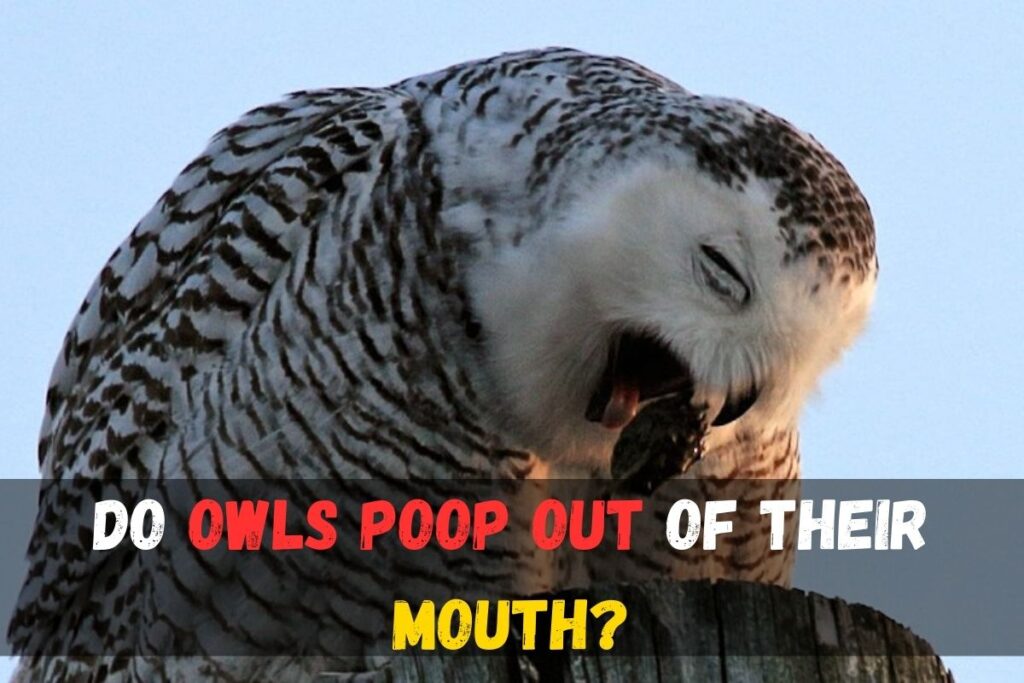
Owls have a unique adaptation known as a “pellet.” Owls regurgitate indigestible parts of their prey, such as bones, fur, feathers, and exoskeletons, in the form of a compact pellet. This regurgitation occurs through the mouth, but it’s not a form of waste elimination. Instead, it helps owls efficiently digest their food by getting rid of the parts that their digestive system cannot process.
What is Owl Poop Used For?
Owl poop, specifically the regurgitated pellets that owls produce, has several purposes and uses in various fields:
- Scientific Research: Owl pellets are often used in scientific studies to analyze the diet and feeding habits of owls. By dissecting these pellets, researchers can identify the remains of the animals the owl has consumed. This helps in understanding the ecosystem and the dietary preferences of owls, which is crucial for conservation efforts and ecological studies.
- Education and Learning: Owl pellets are commonly used in educational settings, especially in biology classes. Dissecting owl pellets provides an engaging and hands-on way for students to learn about food chains, predator-prey relationships, anatomy, and the diet of owls and other birds of prey.
- Bone Analysis and Archaeology: The bones found in owl pellets can be used by scientists and archaeologists to identify the prey species, especially small mammals and birds. This analysis can provide insights into the local fauna, predator-prey relationships, and even historical ecosystems.
- Art and Crafts: Some people use the bones found in owl pellets for creative purposes, such as in arts and crafts. After sterilization, the small bones can be used in jewelry-making, creating ornaments, or other artistic endeavors.
- Fertilizer: In some cases, the organic matter in owl pellets, if properly processed, can be used as a natural fertilizer due to its nutrient content. However, this is less common compared to other uses.
FAQ’S
Do owls urinate?
No, owls do not urinate in the same way as mammals. Owls differ from mammals in their waste excretion process, as they eliminate urea in the form of uric acid instead of dissolving it in urine. Uric acid has low solubility in water, so instead of producing liquid urine, owls produce a thick white paste known as whitewash, which serves the same purpose as urine in mammals.

